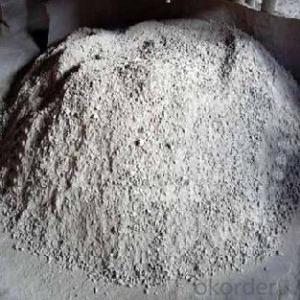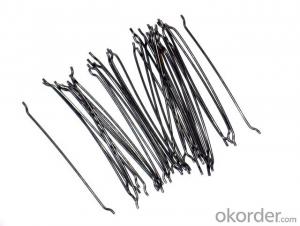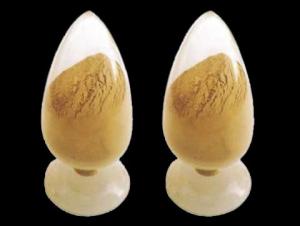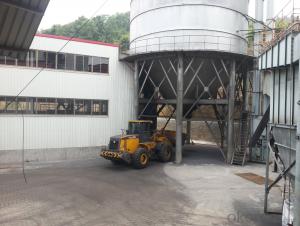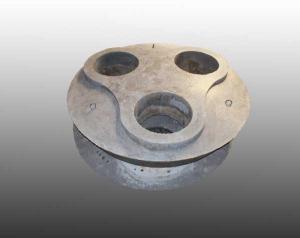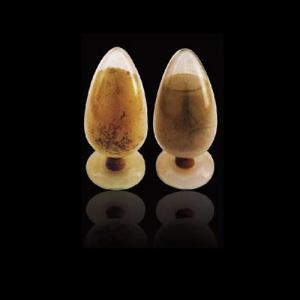ACID RAMMING MASS FOR INDUCTION FURNACE LINING
- Loading Port:
- Qingdao
- Payment Terms:
- TT or LC
- Min Order Qty:
- 1 m.t
- Supply Capability:
- 50000 m.t/month
OKorder Service Pledge
OKorder Financial Service
You Might Also Like
Acid Ramming Mass for Induction Furnace Lining
Product Description:
To ensure the quality of our raw materials, we only purchase our raw materials from our long-term trusted suppliers. With every purchase, our quality control staff performs the first inspection at our supplier’s site. Once the raw materials arrive at our facility, our quality control team performs a second inspection on the batch. Each time raw materials enter our facility, they are inspected again prior to being accepted.
Process Quality Control:
From raw material to final product, our process control inspectors ensure that our procedures are consistently and correctly applied each step of the way. In addition to rigorous process control, our quality control team inspects the output of each process to ensure material quality and consistency. In each of our workshops, our employees understand that the output of their workshop is the input for the next manufacturing department. Therefore they have been trained to always carefully inspect the previous workshop’s work and be responsible for their own output
Product Advantages:
• Strong penetration resistance to molten steel
• Corrosion resistance, easy sintering,
• High packing density
• Professional technical staff track the progress of each project, provide construction instruction and after-sales services
• Provide personalized products, including design and production of the completed series of refractories
• Testing, inspection services
• Product consultation
Product Specifications:

Product Images:
FAQ:
Q1: Why buy Materials & Equipment from OKorder.com?
A1: All products offered by OKorder.com are carefully selected from China's most reliable manufacturing enterprises. Through its ISO certifications, OKorder.com adheres to the highest standards and a commitment to supply chain safety and customer satisfaction.
Q2: How do we guarantee the quality of our products?
A2: We have established an advanced quality management system which conducts strict quality tests at every step, from raw materials to the final product. At the same time, we provide extensive follow-up service assurances as required.
Q3: What are Abrasion Resistant Coatings?
A3: ARC's abrasion resistant coatings guard against the severe wear and erosion that can chip away your plant's bottom line. These high-performance coatings protect new equipment as well as rebuild worn equipment at a fraction of traditional replacement costs.
- Q:What are the factors affecting the thermal expansion of monolithic refractories?
- There are several factors that influence the thermal expansion of monolithic refractories. 1. Chemical Composition: The chemical composition of the refractory material plays a significant role in its thermal expansion. Different chemical elements and compounds have different coefficients of thermal expansion. For example, materials containing high levels of silica tend to have lower coefficients of thermal expansion compared to materials with higher concentrations of alumina. 2. Particle Size: The particle size distribution of the refractory material can affect its thermal expansion. Smaller particle sizes tend to result in higher thermal expansion due to increased surface area and greater contact between particles. 3. Temperature: The temperature at which the monolithic refractory is exposed can greatly impact its thermal expansion. As the temperature increases, the kinetic energy of the particles increases, causing them to move more vigorously and expand. Different refractory materials have different temperature ranges at which they exhibit significant expansion. 4. Thermal History: The thermal history of the refractory material, including its heating and cooling cycles, can influence its thermal expansion behavior. Repeated heating and cooling cycles can induce microstructural changes in the material, affecting its thermal expansion properties. 5. Porosity: The porosity of the monolithic refractory can affect its thermal expansion. Higher porosity generally leads to higher thermal expansion due to the presence of voids and gaps within the material. 6. Binder Content: Monolithic refractories often contain binders that hold the particles together. The type and amount of binder used can impact the thermal expansion of the refractory. Different binders have different coefficients of thermal expansion, which can influence the overall expansion behavior of the material. 7. Thermal Shock: Rapid temperature changes, such as during quenching or exposure to alternating heating and cooling, can cause thermal shock in the refractory material. This can lead to cracks, spalling, and changes in the thermal expansion behavior. Understanding these factors is crucial in selecting the appropriate monolithic refractory material for specific applications, as the thermal expansion characteristics can directly impact the performance and longevity of the refractory in high-temperature environments.
- Q:What are the typical applications of monolithic refractories in blast furnaces?
- Monolithic refractories are commonly used in blast furnaces for various applications, including lining the hearth, taphole, and slag line, as well as repairing cracks and erosion in the furnace lining. They are also used to create a protective barrier against high temperatures, chemical reactions, and mechanical stresses inside the blast furnace.
- Q:How do monolithic refractories improve the quality and consistency of iron and steel products?
- The use of monolithic refractories is essential for enhancing the quality and consistency of iron and steel products. These refractories, which are not shaped and can be easily molded and installed, offer several advantages over traditional brick refractories. To begin with, monolithic refractories provide superior thermal insulation properties, which effectively manage heat during the production process. By maintaining consistent and controlled temperatures, these refractories prevent thermal shocks and minimize thermal gradients, resulting in reduced cracking and distortion in the final products. As a result, the dimensional stability and overall quality of the products are improved. Additionally, monolithic refractories exhibit excellent resistance to thermal spalling and erosion. They can withstand high temperatures, chemical attacks, and mechanical stress, protecting the lining of furnaces and vessels used in iron and steel production. This resistance enhances the durability and reliability of refractory linings, preventing premature failure and extending the lifespan of the equipment. Another advantage of monolithic refractories is their ability to create a seamless lining. Unlike brick refractories, which have joints and gaps that can cause heat loss and uneven distribution, monolithic refractories form a continuous lining with no weak points. This ensures uniform heat distribution and minimizes the risk of hotspots or cold spots, resulting in consistent and reliable iron and steel products. Moreover, monolithic refractories offer flexibility in design and installation. They can be customized to fit various shapes and sizes, allowing for better furnace design optimization. This flexibility enables efficient use of space, improved heat transfer, and reduced energy consumption, all of which contribute to the overall quality and consistency of the final iron and steel products. In conclusion, monolithic refractories enhance the quality and consistency of iron and steel products by providing superior thermal insulation, resistance to thermal spalling and erosion, seamless linings, and flexibility in design and installation. These refractories improve the efficiency and reliability of the production process, resulting in higher-quality final products that meet the industry's stringent standards.
- Q:How do monolithic refractories improve the efficiency of ladle and tundish purging furnaces?
- There are several ways in which monolithic refractories play a crucial role in enhancing the efficiency of ladle and tundish purging furnaces. To begin with, monolithic refractories possess outstanding thermal insulation properties, enabling them to retain heat within the furnace and minimize heat loss to the surroundings. This results in the furnaces being able to operate at higher temperatures, leading to improved efficiency. The higher temperatures facilitate better steel refining, faster heating and purging of the ladle and tundish, and overall increased productivity. Furthermore, monolithic refractories offer superior resistance to thermal shock. The continuous flow of molten metal in purging furnaces, particularly in ladles and tundishes, subjects the refractories to rapid heating and cooling cycles. Traditional refractories may crack or fail under such thermal cycling, resulting in reduced efficiency and additional downtime for repairs. However, monolithic refractories can withstand these extreme temperature changes, ensuring uninterrupted operation and minimizing the need for frequent maintenance. In addition, monolithic refractories exhibit excellent resistance to chemical attacks from molten metals and slag. During the purging process, ladles and tundishes come into contact with aggressive materials that can erode the refractory lining. Monolithic refractories are specifically designed to endure these harsh environments, preventing erosion and prolonging the lifespan of the furnaces. This resistance to chemical attacks not only enhances efficiency by minimizing refractory wear but also guarantees the production of high-quality steel with reduced impurities. Lastly, monolithic refractories offer great versatility in terms of installation and repair. Unlike traditional refractories that necessitate complex bricklaying techniques, monolithic refractories can be easily shaped and installed, enabling faster and more efficient lining construction. Additionally, monolithic refractories can be effortlessly repaired or patched, reducing downtime and ensuring continuous operation of the furnace. In conclusion, monolithic refractories significantly enhance the efficiency of ladle and tundish purging furnaces through their excellent thermal insulation, resistance to thermal shock and chemical attacks, as well as ease of installation and repair. These properties enable higher operating temperatures, reduced heat loss, increased productivity, and extended furnace lifespan, ultimately improving the overall efficiency and performance of the steelmaking process.
- Q:How do monolithic refractories contribute to the safety of iron and steel operations?
- Enhancing the safety of iron and steel operations is a crucial role played by monolithic refractories. Made of a single, continuous material, these refractories offer numerous benefits that contribute to overall safety. To begin with, they provide exceptional thermal insulation, designed to withstand high temperatures and prevent heat transfer to the surrounding environment. This insulation property ensures a safe working temperature, reducing the risk of burns or heat-related injuries for operators. Additionally, monolithic refractories exhibit high resistance to chemical attack. In iron and steel operations, corrosive and hazardous substances like chemicals and molten metals are utilized. By acting as lining materials, monolithic refractories create a protective barrier that resists the corrosive effects of these substances, preventing leaks and potential accidents. Moreover, monolithic refractories possess remarkable mechanical strength, enabling them to endure the mechanical stress exerted by heavy machinery and equipment involved in steelmaking processes. This resilience helps maintain their integrity, minimizing the risk of sudden failure or collapse, and reducing the possibility of accidents and injuries caused by falling debris. Furthermore, monolithic refractories offer easy installation and repair options. They can be applied as castable or gunning materials, allowing for quick and efficient lining of furnaces, ladles, and other equipment. This ease of installation minimizes downtime during maintenance or repairs, mitigating the risk of accidents resulting from delayed or prolonged shutdowns. In conclusion, monolithic refractories contribute to the safety of iron and steel operations through their exceptional thermal insulation, resistance to chemical attack, ability to withstand mechanical stress, and ease of installation and repair. By providing a protective barrier, these refractories help prevent injuries, maintain a safe working environment, and minimize potential hazards associated with high temperatures, corrosive substances, and mechanical failures.
- Q:How do monolithic refractories improve the lining of converters and refining vessels?
- Monolithic refractories play a crucial role in improving the lining of converters and refining vessels in several ways. Firstly, monolithic refractories offer excellent thermal insulation properties, which helps in maintaining the desired temperature inside the converters and refining vessels. This is important because high temperatures are required for various metallurgical processes to occur effectively. Secondly, monolithic refractories have high chemical resistance, which is vital in the harsh conditions of converters and refining vessels. These vessels often come into contact with corrosive materials and aggressive slags, and the monolithic refractories prevent the lining from deteriorating or being eroded by these substances. Moreover, monolithic refractories provide superior mechanical strength and stability, ensuring that the lining remains intact even under high operational stresses. This is especially important in converters and refining vessels where there are frequent mechanical movements and thermal expansions. Additionally, monolithic refractories offer easy installation and repair. Unlike traditional bricks, which require time-consuming and complex assembling, monolithic refractories can be applied as a single mass, reducing downtime during installation or repair. This feature saves both time and cost in maintaining the lining of converters and refining vessels. Overall, the use of monolithic refractories in the lining of converters and refining vessels significantly enhances their performance and longevity. They provide excellent thermal insulation, chemical resistance, mechanical strength, and ease of installation and repair, ensuring efficient and reliable operation in the metallurgical processes.
- Q:How do monolithic refractories withstand the alkali attacks in cement kiln applications?
- Monolithic refractories are able to withstand alkali attacks in cement kiln applications due to their unique composition and structure. These refractories are made from a single material, which allows for a more uniform and dense structure compared to traditional brick refractories. When exposed to alkali attacks in cement kilns, monolithic refractories form a protective layer on the surface which acts as a barrier against the corrosive alkali substances. This protective layer is typically formed by reactions between the alkali substances and the refractory material, resulting in the formation of a stable compound that is resistant to further attacks. Furthermore, monolithic refractories have high chemical resistance, which enables them to withstand the aggressive conditions inside cement kilns. They are designed to have low porosity, which prevents the penetration of alkali substances into the refractory material. This reduces the chances of alkali attacks and prolongs the service life of the refractory lining. In addition, monolithic refractories are often made from materials with high melting points, such as alumina, silica, and magnesia. These materials have excellent thermal stability, allowing the refractories to withstand the high temperatures in cement kilns without significant degradation. This thermal stability is crucial in preventing the formation of cracks and spalling, which can lead to alkali penetration and subsequent damage to the refractory lining. Overall, monolithic refractories are specifically engineered to resist alkali attacks in cement kiln applications by forming a protective layer, having high chemical resistance, and exhibiting excellent thermal stability. These properties make them an ideal choice for lining cement kilns and ensuring their long-term performance and durability.
- Q:What are monolithic refractories and how are they different from other refractory materials?
- Monolithic refractories, unlike bricks or tiles, are refractory materials that are not pre-formed into specific shapes or sizes. Instead, they are composed of a mixture of aggregates, binders, and additives, which are then installed and cured to create a solid and dense structure. One notable difference between monolithic refractories and other refractory materials is their versatility and ease of installation. While traditional bricks or tiles require skilled labor and careful assembly, monolithic refractories can be poured, sprayed, or gunned into place, allowing for a faster and more efficient installation process. This makes them particularly suitable for complex shapes or hard-to-reach areas. Another distinction lies in the physical properties of monolithic refractories. Unlike bricks and tiles, which are known for their mechanical strength and resistance to thermal shock, monolithic refractories can be customized to exhibit a wide range of properties. Depending on the specific application requirements, they can be engineered to have excellent thermal insulation, superior corrosion resistance, or enhanced abrasion resistance. This adaptability makes monolithic refractories suitable for various industries, including steel, cement, glass, and petrochemical. Furthermore, monolithic refractories have the advantage of being able to expand and contract with temperature changes, unlike rigid brick structures. This thermal flexibility helps prevent cracking and damage caused by thermal cycling, thus prolonging the lifespan of the refractory lining. Additionally, monolithic refractories offer better refractory integrity and reduced joint failure since they do not have seams or weak points that are susceptible to thermal stresses. In conclusion, monolithic refractories are a versatile and convenient type of refractory material that can be tailored to meet specific application requirements. Their easy installation, thermal flexibility, and customizable properties distinguish them from other refractory materials like bricks or tiles.
- Q:How are monolithic refractories installed and repaired in iron and steel plants?
- Monolithic refractories in iron and steel plants are typically installed through a process called gunning, where a specialized gunning machine is used to spray the refractory material onto the desired surface. The refractory material is mixed with water or a bonding agent to form a dense and durable lining. In terms of repairs, damaged or worn-out monolithic refractories are typically removed by mechanical means, such as jackhammers or pneumatic tools. The damaged area is then cleaned and prepared before new refractory material is applied using the gunning method. In some cases, patching materials may be used to repair smaller areas of damage. Overall, the installation and repair of monolithic refractories in iron and steel plants require skilled technicians and specialized equipment to ensure the optimum performance and longevity of the refractory lining.
- Q:How do monolithic refractories perform in ladle lining applications in the iron and steel industry?
- Monolithic refractories are highly effective in ladle lining applications in the iron and steel industry. Their outstanding thermal shock resistance, erosion resistance, and high refractoriness allow them to withstand the extreme conditions of molten metal and slag in ladles. Monolithic refractories also offer excellent thermal conductivity and low porosity, ensuring efficient heat transfer and preventing slag infiltration. Additionally, their easy installation and maintenance make them a preferred choice for ladle lining, ensuring prolonged service life and enhanced productivity in the iron and steel industry.
1. Manufacturer Overview |
|
|---|---|
| Location | |
| Year Established | |
| Annual Output Value | |
| Main Markets | |
| Company Certifications | |
2. Manufacturer Certificates |
|
|---|---|
| a) Certification Name | |
| Range | |
| Reference | |
| Validity Period | |
3. Manufacturer Capability |
|
|---|---|
| a)Trade Capacity | |
| Nearest Port | |
| Export Percentage | |
| No.of Employees in Trade Department | |
| Language Spoken: | |
| b)Factory Information | |
| Factory Size: | |
| No. of Production Lines | |
| Contract Manufacturing | |
| Product Price Range | |
Send your message to us
ACID RAMMING MASS FOR INDUCTION FURNACE LINING
- Loading Port:
- Qingdao
- Payment Terms:
- TT or LC
- Min Order Qty:
- 1 m.t
- Supply Capability:
- 50000 m.t/month
OKorder Service Pledge
OKorder Financial Service
Similar products
New products
Hot products
Hot Searches
Related keywords

